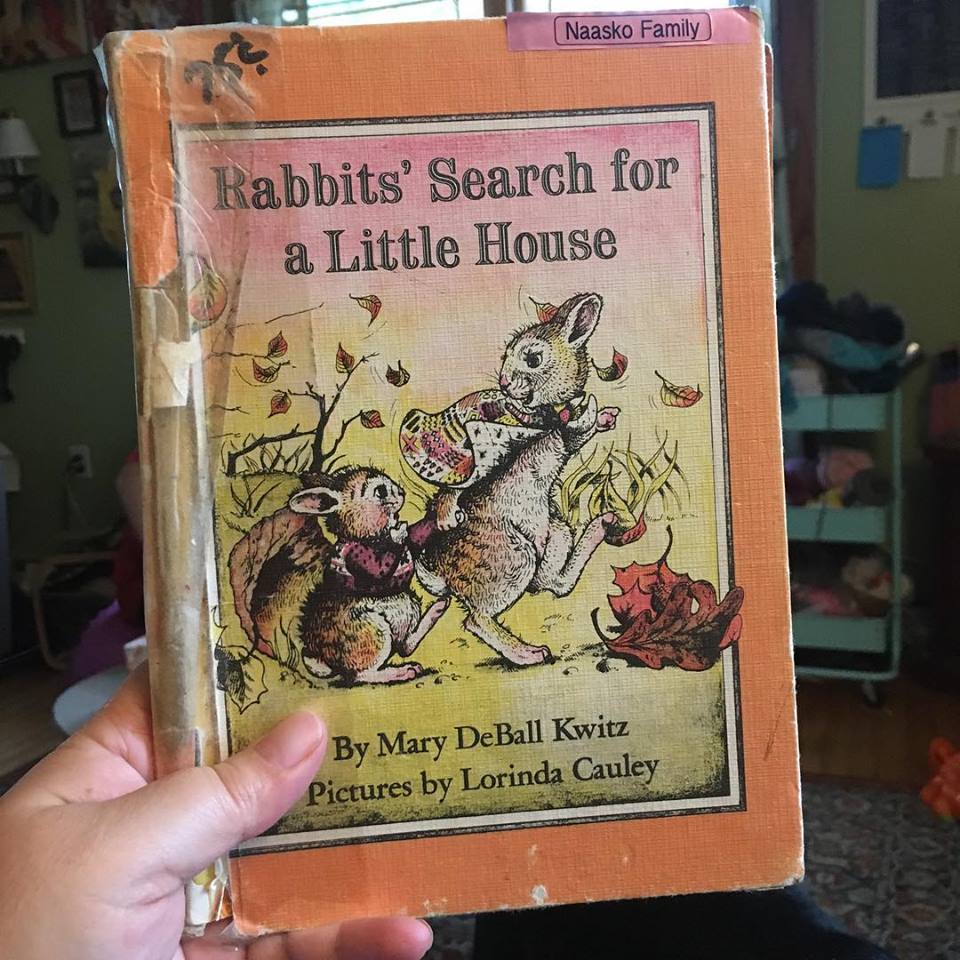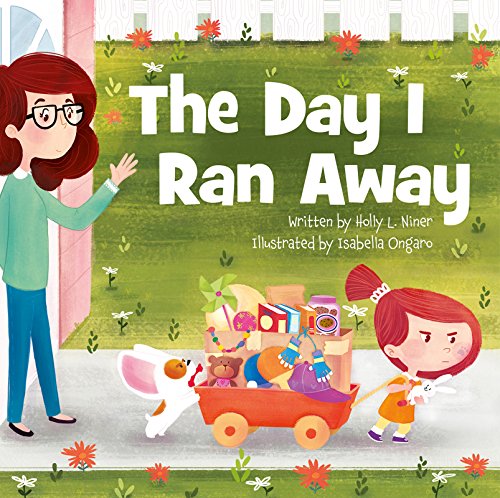Guest poster Melissa Naasko invites us to a family ritual and the powerful reason she reads to her children.
In a corner of my house is a round oak table that was the kitchen table my husband sat at as a child. It is where the teenaged children do their school work. Next to it is a set of bookshelves that house their books and my husband’s; these are the books that are expensive or fragile and ready for when they are needed, and the little children are not allowed to play with these books or really even look at them too hard.
On the shelf with the Theology books sits an incredibly battered book, its cardboard cover fraying badly at the corners and its binding taped back together in many places and only occasionally with any real skill. It’s a cheap book club edition of a children’s book with minimal investment in its printing costs, which explains the oddly orange hue to every page. It is worn and damaged and looks ready for the bin, but it is a prized book among my children. It is carefully placed on a high shelf near the canon law book and those of the history of the Russian Church. It is there precisely because it is fragile and valuable and ready for when it is needed.
The Calm
I have heaps of children, just heaps of them. There are eleven of them all in all, six girls and five boys. You learn a lot of things by having more children than you can count on both hands, and one of those is a sense of purpose in calm. I am not the kind of mother who seeks to make every moment of childhood this memorable, Pinterest-driven event “for the ‘gram’” because no one has that much emotional currency for that many kids. I think no one has that for any number of kids; it would be exhausting. I am not the woman who turns every event into a holiday. I am not a curmudgeon about things, but I do quietly sip tea as other mothers panic about their leprechaun and April fools brunches and think, “Uh, no.” Just no.
That said, there is one notable exception, and that is the first snow. Many years ago, now more than twenty, my oldest child came into the world on the first snow. It was the middle of September, because Colorado. I woke up one cold morning to find that while I slept my water had broken and with it came a rush of knowledge that nothing would ever be the same again. It was the beginning of a complicated and messy and beautiful story that is still unfolding to this day.
The Snow
While he was still tiny, while perusing and sifting through the books at a thrift store, I found one about a first snow. There is something about that first snow that begs us to hunker down and wall ourselves off from the outside. We want to be drenched in cocoa and thick socks and fluffy blankets. Thinking about how my first-born drove my insatiable need for domesticity, it seemed a perfect element that he was born on the first snow. It all comes together. I bought the book for a quarter. I only know it was a quarter because the price is still on it, and I cannot remember anything else I may or may not have bought that day because only this is lasting.
The Ritual
In this book, a mother rabbit and her wee little rabbit are looking for a winter home because the approaching winter is slowly taking their summer one – the leaves are falling off the bush that sheltered them. They look and look, but every inn is full and they are turned away at every knock, and so ultimately they have to make their own home. I won’t deprive you of the joy of reading this charming little book to learn how this happens, and I fully expect you to find it and read it. Let it suffice to say that when the snow finally comes, they can view it from inside their own cozy little home.
Since the very first time I read this book, I felt like the mother rabbit and her wee little rabbit and made their home in my heart. The very next first snow, I read this little book to my oldest child and I made tea and even cake. It has continued this way every first snow since. The ritual is not elaborate. We make something to eat and drink, and what we have changes and who does the baking does as well. There are years when one or another child has claimed this privilege. The only added complexities were the increasing number of children who sat around the table and listened to the book as they sipped tea or cocoa and snuggled down into their blankets.
The Reason
Now come the years when fewer children sit around the table than the year before. There are children who are grown and away at college or work and are not there to listen to the story. The ebb and flow of the conversation have changed because there are no more babies to quiet and no toddlers to wrangle. Someday we will come to the first snow when the youngest one of these children is too old to sit and listen to her mother read the book. Perhaps I will read it to myself? While a part of me grieves for this moment, this slow approaching shift in the plot line of my life, I know that the house I have built is sturdy and strong, and what is more is that they will know it, too.

The book is called Rabbit’s Search for a Little House, and it was published way back in 1988. It was written by Mary DeBall Kwitz and illustrated by Lorinda Cauley. I bought a copy for my oldest son’s twenty-first birthday to remind him of the stories of the day that he was born, when fallen branches had knocked out the power to the doctor’s office and the streetlights were out. I want him to remember the safe harbor that is my love and the love of his father and siblings and the home he can always return to when it becomes cold outside. This is why we read to children. We read to them to give them a place to come back to, one that can outlast us, one that they can then give to their children. We read to build a wee little, warm little, snug little house for ourselves and our little rabbits.
Melissa Naasko is the wife of an Orthodox deacon, the mother of eleven hungry children, and author of Fasting as a Family from Ancient Faith Publishing. She cooks, knits, and writes from the Upper Peninsula.


